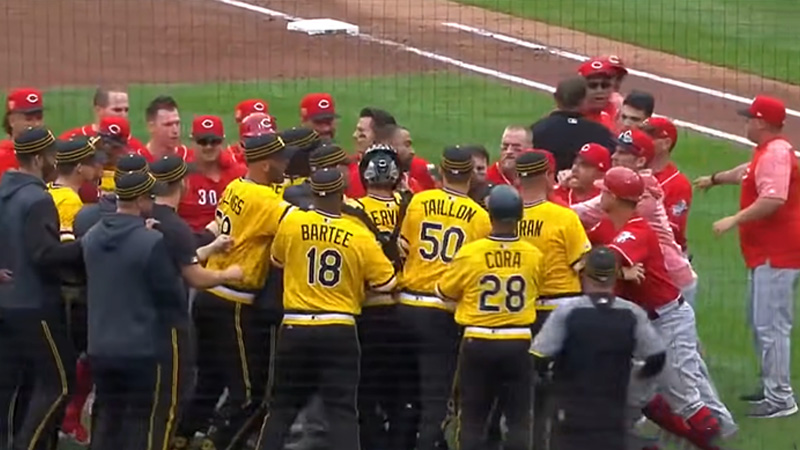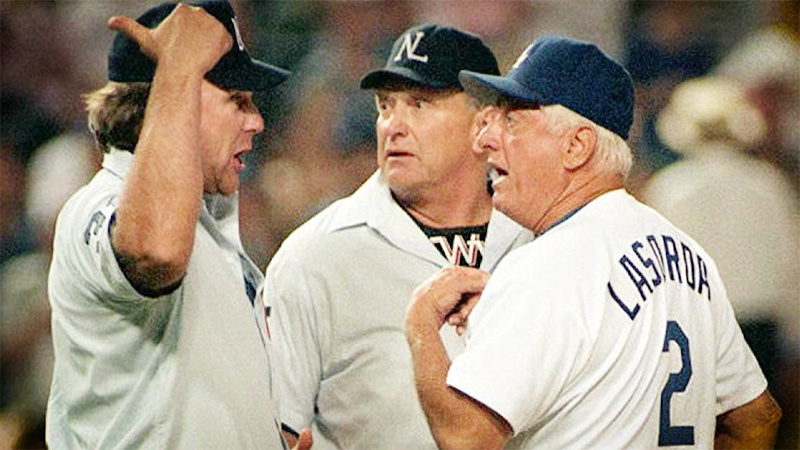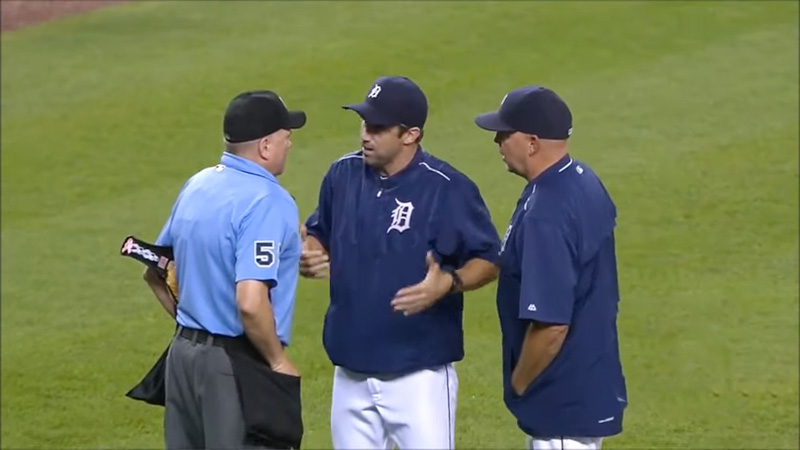Baseball, known as America’s pastime, has a long and storied history filled with thrilling games, legendary players, and iconic moments. While the focus is often on the action that takes place on the field, there are occasions when a game takes an unexpected turn and ends in a forfeit.
Forfeits in baseball occur when a team is unable to continue playing due to various reasons, such as a lack of players, rule violations, or unsportsmanlike conduct.
This article delves into the world of forfeits in baseball, exploring their historical perspective, definition, rules, circumstances leading to forfeits, impact on statistics and records, notable examples, and rare modern instances. So, join us as we delve into this intriguing aspect of America’s beloved pastime.
What Is Foefeit in Baseball?
Forfeit in baseball refers to a situation where a team is unable to continue playing the game, resulting in the opposing team being awarded a victory. It signifies a concession by one team and a recognition that they are unable or unwilling to complete the game.
In the event of a forfeit, the official score recorded is 9-0. This standardized score equates to one run per each regulation game inning not played.
It is a practical and straightforward way to represent the outcome of a forfeited game. The score of 9-0 does not reflect any actual runs scored or allowed by the teams involved, as the game was terminated before completion.
Rule of Foefeit
The rule that governs forfeits in baseball can be found in Rule 2.00 of the Official Baseball Rules issued by Major League Baseball. This rule provides guidance on various aspects of the game, including the definition and handling of forfeits.
It outlines the conditions under which a forfeit can occur and the resulting consequences, such as the recorded score and the impact on player statistics.
Rule 2.00 ensures consistency and fairness in dealing with forfeited games across the league. It serves as a reference point for umpires, players, and officials to understand the proper procedures and implications when a forfeit takes place.
By following this rule, the integrity of the game is upheld, and a standardized approach is maintained when recording and documenting forfeits in baseball.
Historical Perspective of Forfeits

In the early days of baseball, forfeits were more common occurrences compared to modern times. The game was still evolving, and there were fewer established rules and regulations.
As a result, teams and players were more prone to engage in unsportsmanlike behavior or violate the rules, leading to forfeits. Additionally, logistical challenges and lack of organization sometimes made it difficult for teams to field a complete lineup, resulting in forfeits.
Examples of notable forfeits in baseball history further illustrate this point. One such example is the infamous “Disco Demolition Night” on July 12, 1979.
The Chicago White Sox organized a promotional event that involved blowing up disco records between games of a doubleheader. However, the crowd became unruly, and the field was severely damaged, making it unplayable. As a result, the second game was forfeited by the White Sox.
Another notable forfeit occurred in 1954 when the St. Louis Cardinals forfeited a game to the Philadelphia Phillies. The details of this particular forfeit may be hazy, but it serves as a reminder of the times when heated disputes or managerial strategies could lead to such outcomes.
Circumstances Leading to Forfeits
Forfeits in baseball can occur due to various circumstances that prevent a team from continuing the game. Understanding these factors provides insights into the situations that may lead to a forfeit.
Lack of Players or Inability to Continue the Game
One common reason for a forfeit is when a team is unable to field a complete lineup or continue playing with the available players.
This could be due to injuries, illnesses, or other unforeseen circumstances that leave the team short-handed. If a team cannot meet the minimum player requirement to continue the game, a forfeit may be declared.
Violation of League Rules or Regulations
Forfeits can also result from a team’s violation of league rules or regulations. These violations can range from using ineligible players, employing illegal equipment, or engaging in actions that are deemed against the fair play principles set by the league.
When a team is found to be in violation, it may face penalties, including the forfeiture of the game.
Unsportsmanlike Conduct or Disruptive Behavior of Foefeit
Instances of unsportsmanlike conduct or disruptive behavior can lead to a forfeit as well. This may include actions such as excessive arguing with umpires, physical altercations, or intentional acts that disrupt the flow of the game.
When such behavior jeopardizes the safety of players, officials, or spectators, the game may be forfeited to ensure the well-being of all involved.
It’s important to note that forfeits are typically considered a last resort, and efforts are made to avoid them whenever possible. Leagues and officials strive to uphold the integrity of the game and promote fair competition.
However, in situations where the circumstances prevent the continuation of the game or a team’s actions warrant a forfeit, it becomes necessary to make that decision in order to maintain the standards and spirit of the sport.
Impact on Statistics and Records of Forfeits

Forfeits in baseball have specific implications for player statistics and the records of the teams involved. Understanding these impacts provides clarity on how forfeits are reflected in the game’s statistical and historical context.
How Forfeits Do Not Affect Individual Player Statistics
When a game is forfeited, individual player statistics are not affected. The players’ performance in the forfeited game does not count towards their personal records or impact their season statistics.
This means that any hits run, strikeouts, or other statistical categories accumulated during the forfeited game are disregarded.
Why the Standardized Score of 9-0 is Used
The standardized score of 9-0 is used to represent a forfeited game. Each regulation inning not played is equated to one run, resulting in a final score of 9-0.
This score is a practical way to signify the outcome of a game that was terminated before completion due to a forfeit. It provides a consistent and recognizable representation of the forfeited result, even though no actual runs were scored or allowed by the teams.
Forfeits Are Recorded but Not Counted as Wins or Losses
While forfeits are recorded in baseball, they are not counted as wins or losses for either team. The team that would have won the game if it had continued is awarded the victory, but it is not reflected as a traditional win in their season record.
Similarly, the team forfeiting the game does not receive a loss. Instead, the forfeit is recorded as a separate event, acknowledging that the game was not completed under regular circumstances.
By not counting forfeits as wins or losses, the integrity of team records and standings is preserved. It ensures that only games played and completed under fair conditions contribute to a team’s official win-loss record.
Forfeits are treated as unique occurrences, separate from traditional game outcomes, and are taken into account in the historical documentation of a team’s season.
Notable Examples of Forfeits
Forfeits in baseball history have produced memorable and unusual situations that are worth exploring. These examples shed light on the diverse circumstances and events surrounding forfeited games.
Mention of Specific Forfeits in Baseball History
Throughout the years, several notable forfeits have left their mark on baseball history. One such example is the infamous “Disco Demolition Night” on July 12, 1979, at Comiskey Park.
The Chicago White Sox organized a promotional event between games of a doubleheader, which involved blowing up disco records on the field. However, the unruly crowd and resulting field damage led to the forfeiture of the second game by the White Sox.
Another notable forfeit occurred on September 9, 1916, when the Detroit Tigers forfeited a game to the St. Louis Browns.
In an attempt to protest a controversial call made by the umpire, the Tigers refused to take the field for the ninth inning, leading to the forfeiture. This incident highlighted the tensions between players and umpires during that era.
Anecdotes Highlighting Unusual or Memorable Forfeit
Beyond specific examples, forfeits in baseball have given rise to unusual and memorable stories. One such story involves a forfeit that occurred on May 2, 1884, between the New York Gothams (later known as the Giants) and the Philadelphia Phillies.
In this instance, the Gothams were leading 20-6 after seven innings when the game was called due to darkness. The Phillies claimed that they had the right to continue playing, but the umpire disagreed, resulting in a forfeit in favor of the Gothams.
Another anecdote involves the famous Eddie Gaedel incident in 1951. Gaedel, a 3’7″ dwarf, was hired as a publicity stunt by Bill Veeck, the owner of the St. Louis Browns. Gaedel was sent to bat as a pinch-hitter during a game against the Detroit Tigers.
The opposing team and the umpire immediately recognized the situation as a mockery of the game, resulting in the forfeit of the game to the Tigers. These stories and anecdotes showcase the unique and sometimes bizarre circumstances that have led to forfeits in baseball.
They demonstrate the impact of external factors, unusual events, or controversies that have resulted in games being forfeited throughout the history of the sport.
Rare Modern Instances of Forfeit
Forfeits in modern baseball have become increasingly rare compared to earlier eras. This section explores the decline of forfeits in the sport and provides examples of some recent instances and their causes.
The Decline of Forfeits in Modern Baseball
The decline in forfeits can be attributed to several factors. The professionalization and standardization of the game, along with stricter enforcement of rules and regulations, have reduced the likelihood of teams engaging in unsportsmanlike behavior or violating league protocols.
Additionally, advancements in logistical planning, player management, and improved communication channels have helped teams avoid situations where they are unable to field a complete lineup.
Moreover, the emphasis on fair play and maintaining the integrity of the game has fostered an environment where teams and players are encouraged to resolve disputes or challenges within the established rules and guidelines, rather than resorting to forfeits.
Examples of Recent Forfeits and Their Causes
While rare, there have been some instances of forfeits in modern baseball. One example occurred on May 2, 2010, when the Houston Astros forfeited a game to the Chicago Cubs.
The Astros were unable to open the retractable roof of their home stadium, Minute Maid Park, due to a technical malfunction. As a result, the game could not proceed, and the Cubs were awarded the victory by forfeit.
Another recent forfeit took place on July 30, 2019, when the San Francisco Giants forfeited a game to the Washington Nationals.
The Giants’ protest against an overturned call regarding a rain delay led to their failure to appear on the field when play was set to resume. The umpires deemed it a forfeit, resulting in a loss for the Giants.
These examples highlight that while rare, forfeits can still occur in modern baseball due to unforeseen circumstances, technical issues, or disputes that cannot be resolved within the parameters of the game.
However, they remain infrequent and represent unusual situations rather than a common occurrence in the sport.
The declining frequency of forfeits in modern baseball reflects the sport’s continued commitment to fair play, sportsmanship, and adherence to rules and regulations.
While forfeits may still occur on rare occasions, they serve as reminders of the historical significance of this aspect of the game and the importance placed on completing games under fair and agreed-upon conditions.
FAQs
Can a team forfeit a game voluntarily?
Yes, while rare, there have been instances where teams have voluntarily forfeited a game. This can happen if a team believes it is unable to continue playing due to extenuating circumstances or if they want to make a statement or protest a particular issue. However, voluntary forfeits are uncommon and usually occur in unique situations.
Are there any consequences for a team that forfeits a game?
Yes, forfeiting a game can result in various consequences depending on the league and circumstances. The team that forfeits typically receives a loss in their season record, and the opposing team is awarded a victory.
Additionally, there may be fines, disciplinary actions, or other penalties imposed by the league or governing body, depending on the severity of the situation.
Can a forfeited game be replayed at a later date?
Generally, forfeited games are not replayed at a later date. Once a game is forfeited, it is officially recorded as a completed game with a 9-0 score, representing one run per regulation inning not played.
However, in exceptional circumstances, such as a significant impact on playoff standings or controversial factors surrounding the forfeit, the league may decide to replay the game, but this is extremely rare.
Can a forfeit impact a team’s chances of making the playoffs?
Yes, forfeits can potentially impact a team’s playoff chances, especially if they occur in critical games or during a tight race for playoff spots. A forfeit can result in the loss of a game and a decrease in the team’s winning percentage, which may affect their position in the standings.
It highlights the importance of maintaining fair play and avoiding circumstances that can lead to forfeits.
Wrapping Up
Forfeits in baseball are rare occurrences that reflect unique circumstances, unusual events, or violations of league rules.
While more common in the early days of the sport, forfeits have become increasingly infrequent in modern baseball due to the professionalization of the game, stricter enforcement of rules and regulations, and improved team management practices.
The impact of a forfeit on individual player statistics is minimal, as the game is not counted toward their personal records. Instead, a standardized score of 9-0 is used to represent a forfeited game, signifying one run per regulation inning not played.
As baseball continues to evolve, efforts will remain in place to minimize the occurrence of forfeits and ensure that games are completed under fair and agreed-upon conditions.
Thank you for your time.







